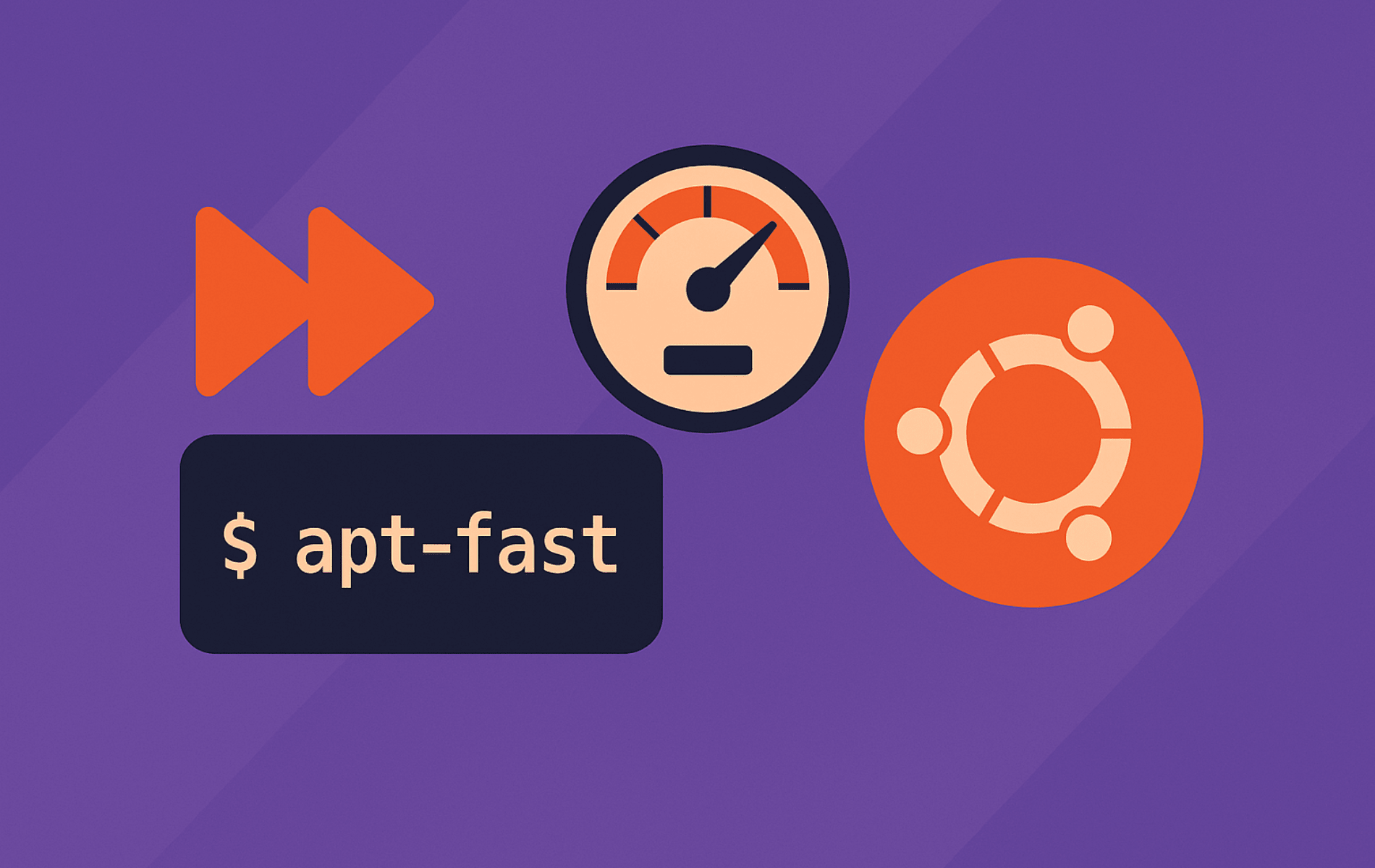APT-Fast is an efficient wrapper for “APT,” the default package manager in Ubuntu, designed to accelerate package downloads by using multiple connections to fetch packages in parallel. By leveraging tools like “aria2” or “axel,” APT-Fast can significantly reduce the time it takes to update, upgrade, and install packages on your system, making it particularly useful for users with slower internet connections or those looking to optimize their package management process.
On Ubuntu, APT-Fast can be installed via the command-line by adding the apt-fast/stable Launchpad PPA. This PPA ensures you have access to the latest stable version of APT-Fast, providing an easy and reliable way to enhance your package management experience. This guide covers installing APT-Fast, configuring parallel connections and mirrors, and adding it to automated update workflows for efficient system maintenance.
Add APT-Fast Launchpad PPA
To begin, access your terminal (Ctrl+Alt+T). Next, input this command to add the Launchpad PPA repository:
sudo add-apt-repository ppa:apt-fast/stable -yThis adds the APT-Fast stable repository to your system.
Refresh APT Package Index
After adding the repository, refresh your package list to ensure the system recognizes the new source:
sudo apt updateThis updates your system’s package list, ensuring it recognizes the newly added APT-Fast repository.
Install APT-Fast with APT Command
Next, install APT-Fast by executing:
sudo apt install apt-fastThe installation shows configuration prompts for APT-Fast, allowing customization based on your preferences.
Choosing the Package Manager
During setup, you’ll be prompted to select a package manager. Options include “apt-get,” “apt,” or “aptitude.” For most users, “apt” or “apt-get” are suitable choices. In this guide, select “apt.”
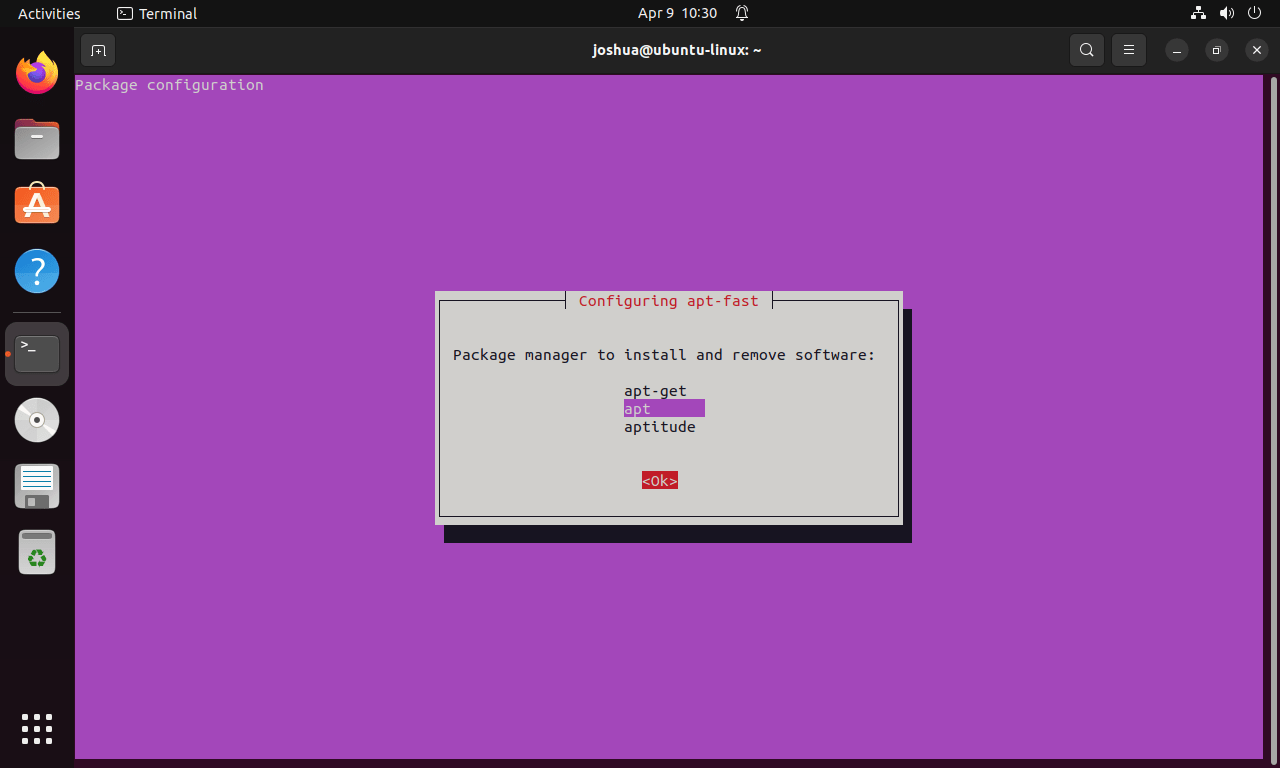
Setting the Maximum Number of Connections
Next, you’ll decide on the maximum number of connections. The default is 5, but you can adjust it to 10 or 20 based on your network’s strength and personal preference.
If unsure, stick with the default. However, the configuration section below explains how to modify this setting later.
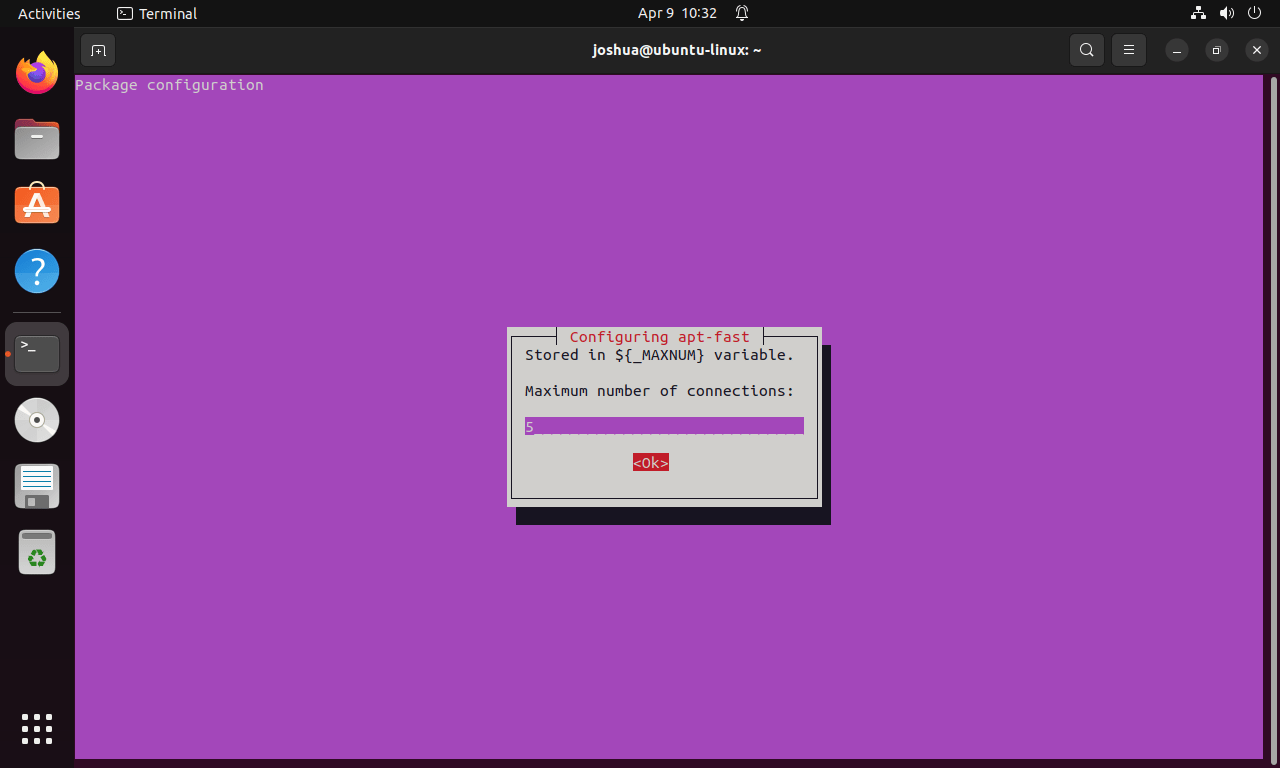
Downloading Packages Before Confirmation
Finally, the last prompt in the APT-Fast installation process concerns the pre-download of installable packages before package manager confirmation. This setting, if enabled, bypasses the usual APT-Fast confirmation dialog.
Make a selection based on your preference.
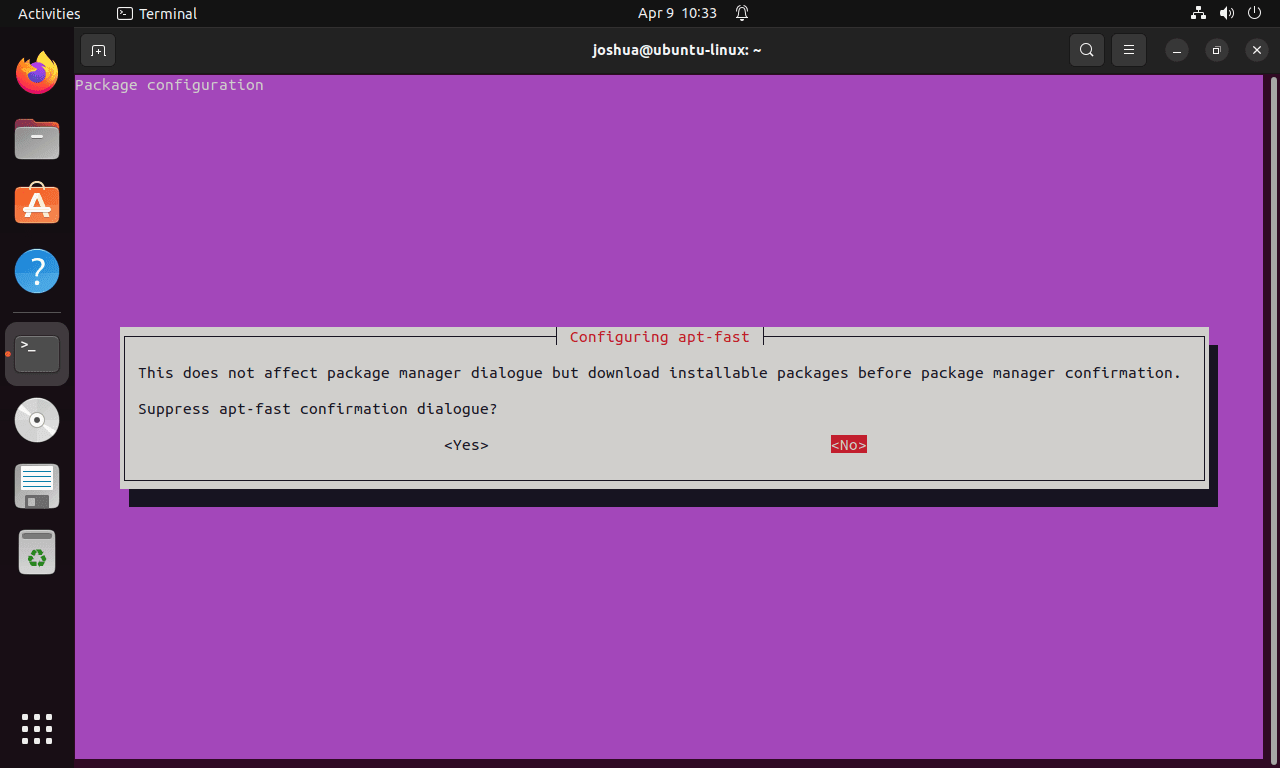
Understanding APT-Fast
If you are new to APT-Fast, think of it as a turbocharged version of the standard APT package manager. Instead of downloading one package at a time like traditional APT, APT-Fast splits files into multiple chunks and downloads them simultaneously, similar to how download managers accelerate file transfers in web browsers.
Basic APT-Fast Syntax
APT-Fast uses the same command structure as regular APT, making the transition seamless:
sudo apt-fast [apt-command] [package-name]Simply replace apt with apt-fast in your existing commands. The underlying package manager (APT) handles dependency resolution and installation, while APT-Fast accelerates the download phase through parallel connections.
When to Use APT-Fast
- Large system updates: When upgrading hundreds of packages, parallel downloads save significant time.
- Slower connections: Networks with limited bandwidth benefit most from connection pooling.
- Multiple package installations: Installing software bundles like development tools or desktop environments.
- High-latency networks: Parallel connections reduce the impact of latency on download times.
On the other hand, for single small packages or quick updates, the performance difference between APT and APT-Fast is minimal.
Quick Reference for Common Operations
| Task | APT-Fast Command | What It Does |
|---|---|---|
| Update package lists | sudo apt-fast update | Refreshes repository metadata with parallel connections |
| Upgrade installed packages | sudo apt-fast upgrade | Updates packages to latest versions using parallel downloads |
| Install new software | sudo apt-fast install [package] | Downloads and installs packages with multiple connections |
| Full system upgrade | sudo apt-fast full-upgrade | Performs complete upgrade with dependency changes |
| Handle complex dependency changes | sudo apt-fast dist-upgrade | Applies in-release upgrades that add or remove packages as needed |
| Remove packages | sudo apt-fast remove [package] | Uninstalls software (downloads not needed) |
Configure APT-Fast
Editing the APT-Fast Configuration File
To tailor APT-Fast settings, begin by editing its configuration file. Use a command-line text editor, such as Nano, for this purpose:
sudo nano /etc/apt-fast.conf
Setting the Maximum Number of Connections
Locate the _MAXNUM variable within the configuration file to adjust the number of connections. For instance, setting the maximum connections to 10 is done by:
_MAXNUM=10Choosing the Download Manager
Additionally, APT-Fast supports different download accelerators, like Axel and Aria2, which enhance the efficiency of downloading packages. Understanding these options helps you make an informed choice for your system’s configuration.
- Axel: A light and efficient download accelerator, Axel speeds up the process by using multiple connections for a single download. It’s an excellent choice for users looking for a straightforward, minimalistic solution that integrates well with the existing package management system.
- Aria2: Conversely, Aria2 is a more versatile download utility. It supports various protocols, including HTTP, HTTPS, FTP, SFTP, and BitTorrent. Aria2 is known for its flexibility and is suited for users who require a wide range of features and advanced downloading capabilities.
To switch between these download managers in APT-Fast, locate the “_DOWNLOADER” line in the configuration file. For Aria2, adjust the line to:
_DOWNLOADER='aria2c --no-conf -c -j ${_MAXNUM} -x ${_MAXCONPERSRV} -s ${_SPLITCON} --min-split-size=${_MINSPLITSZ} --stream-piece-selector=${_PIECEALGO} -i ${DLLIST} --connect-timeout=600 --timeout=600 -m0 --header "Accept: */*"'Alternatively, if you prefer Axel, modify the line as follows:
_DOWNLOADER='grep -E "^https?://" "${DLLIST}" | cut -f1 | xargs -n 1 -P ${_MAXNUM} axel -a -n ${_MAXCONPERSRV}'Be sure to save your changes after selecting the preferred download manager.
Configuring APT-Fast Mirrors
Furthermore, APT-Fast can leverage multiple mirrors to enhance download speeds. Configure these in the /etc/apt-fast.list file. Open it using nano:
sudo nano /etc/apt-fast.listInside this file, you can add or modify the list of mirrors. For example, add the following line to use a mirror from the United States:
deb http://us.archive.ubuntu.com/ubuntu/ $RELEASE main restricted universe multiverseReplace $RELEASE with the codename for your Ubuntu version. For example, if you’re using Ubuntu 22.04, replace $RELEASE with “jammy.” Similarly, if you’re using Ubuntu 24.04, change “jammy” to “noble.”
Once finished, save and close the file.
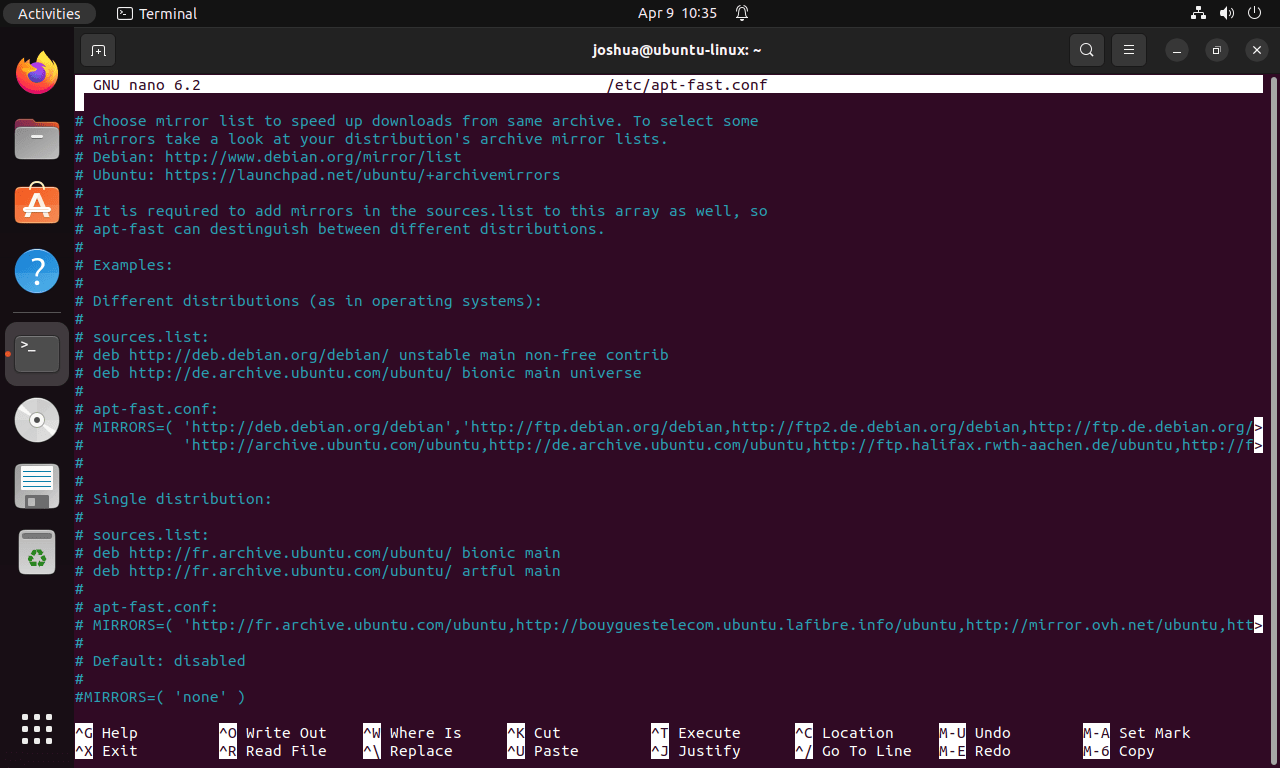
Common APT-Fast Package Operations
Basic APT-Fast Commands
APT-Fast enhances the standard APT commands, streamlining package management tasks. Below are key commands to integrate APT-Fast into your workflow.
To update the package list using APT-Fast, run:
sudo apt-fast updateFor package installation, such as htop, the command is:
sudo apt-fast install htopUpgrade APT-Fast Command
Similarly, to update all installed packages to their latest available versions, execute:
sudo apt-fast upgradeThis command ensures that your system’s packages are up-to-date, maintaining functionality and security.
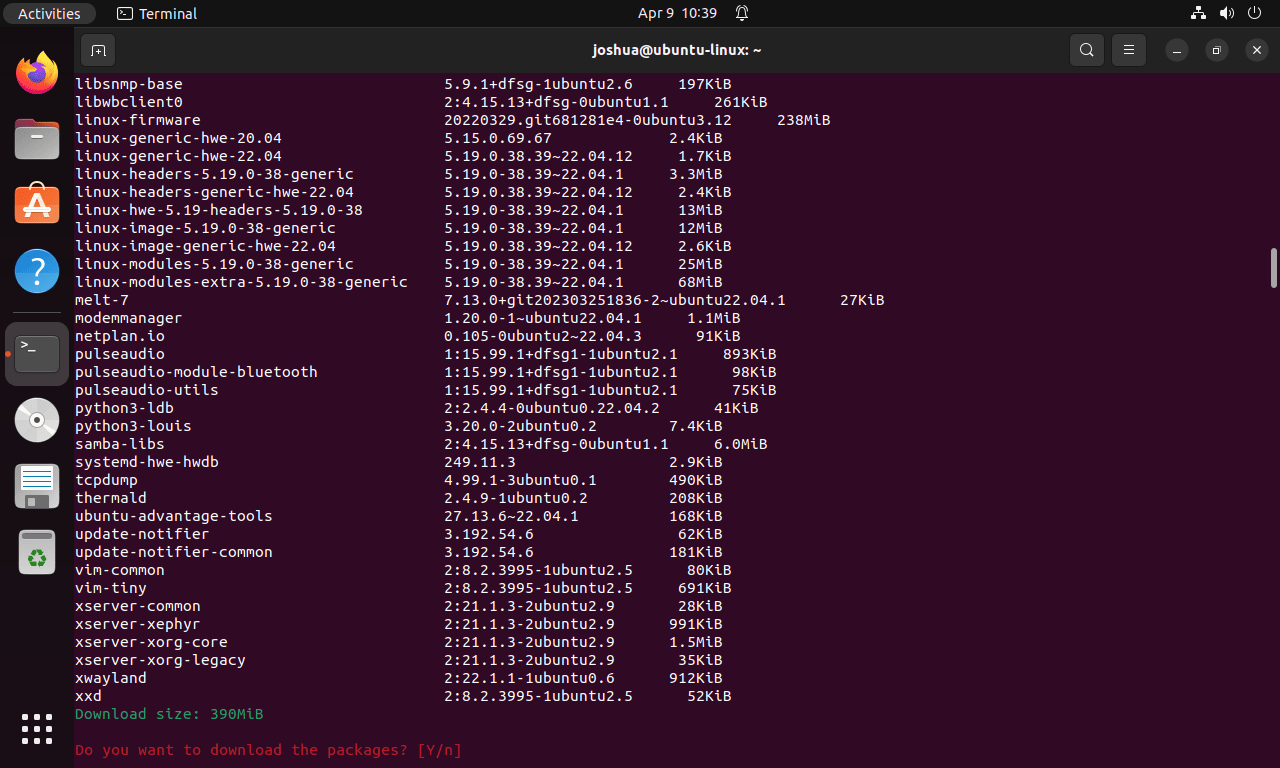
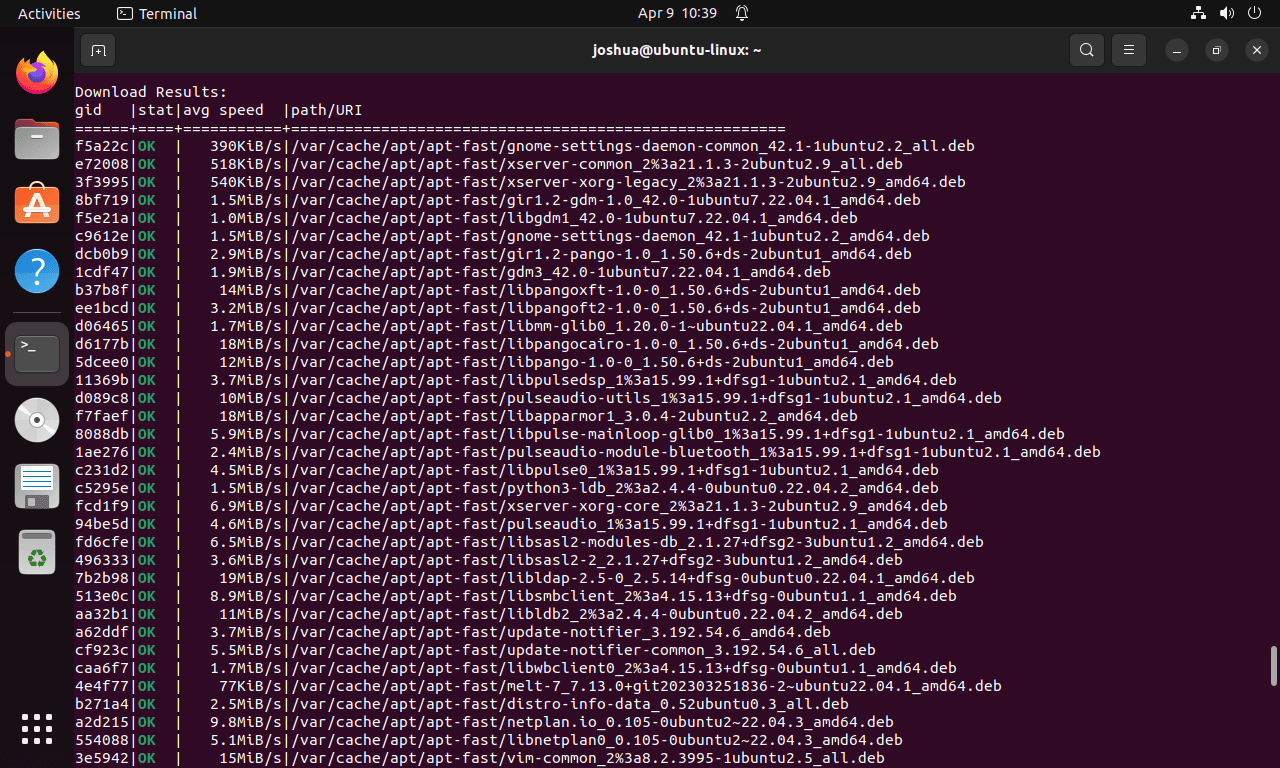
Full Upgrade APT-Fast Command
Use the dist-upgrade flag when a full upgrade within your current Ubuntu release needs to install or remove packages to resolve dependency changes:
sudo apt-fast dist-upgradeThis command can be time-consuming and may remove obsolete packages, so review the summary carefully and back up important data before proceeding.
On Ubuntu, major release upgrades, such as moving from Ubuntu 22.04 LTS (Jammy) to Ubuntu 24.04 LTS (Noble), should still use
sudo do-release-upgrade. The dedicated upgrade utility disables PPAs, updates third-party sources, and mitigates issues that APT-Fast alone cannot handle.
First-Time User Tips
Choosing the Right Connection Count
The number of parallel connections significantly impacts download performance. Here are recommendations based on connection type:
- Slow connections (under 10 Mbps): Use 5-10 connections to maximize throughput without overwhelming bandwidth.
- Medium connections (10-50 Mbps): Use 10-16 connections for optimal balance between speed and stability.
- Fast connections (over 50 Mbps): Use 16-20 connections to fully utilize available bandwidth.
- Server/datacenter connections: Use 20+ connections for maximum throughput on high-speed links.
While higher connection counts increase memory usage slightly, they provide diminishing returns beyond 20 connections for most users.
Testing Download Speed Improvements
To measure APT-Fast’s performance gains, compare download times for the same operation:
# Test standard APT speed
time sudo apt install --download-only libreoffice
# Test APT-Fast speed
time sudo apt-fast install --download-only libreofficeThe --download-only flag downloads packages without installing them, allowing fair comparison. In many situations, APT-Fast delivers noticeably faster downloads, often several times quicker than standard APT depending on connection quality and mirror availability.
When to Use Regular APT Instead
While APT-Fast excels at large downloads, standard APT remains preferable for:
- Single small packages: Overhead from parallel connections negates benefits for packages under 5 MB.
- System scripts: Automated scripts should use regular APT for reliability and simpler error handling.
- Troubleshooting: When diagnosing package issues, standard APT provides clearer, more detailed output.
- Unstable connections: Networks with frequent interruptions may experience more failures with parallel downloads.
Troubleshooting Common APT-Fast Issues
PPA Connection Failures
If adding the PPA fails with connection errors, verify your internet connection and try updating certificates:
sudo apt update && sudo apt install ca-certificates
sudo add-apt-repository ppa:apt-fast/stable -yAlternatively, check if your firewall or proxy blocks Launchpad connections. In particular, corporate networks often require proxy configuration in /etc/apt/apt.conf.d/.
Download Manager Not Found
If APT-Fast reports “aria2c: command not found” or similar errors, install the required download manager:
# Install aria2 (recommended)
sudo apt install aria2
# Or install axel (alternative)
sudo apt install axelFollowing installation, verify the configuration file points to the correct download manager in /etc/apt-fast.conf.
Configuration Dialog Not Appearing
If the installation completes without showing configuration prompts, manually reconfigure APT-Fast:
sudo dpkg-reconfigure apt-fastThis reopens the configuration dialogs for package manager selection, connection count, and download behavior.
Mirror Connectivity Problems
When downloads fail or timeout frequently, test mirror availability:
# Test default Ubuntu mirror
curl -I http://archive.ubuntu.com/ubuntu/
# Test specific mirror
curl -I http://us.archive.ubuntu.com/ubuntu/If mirrors respond slowly, select geographically closer mirrors in /etc/apt-fast.list using the Ubuntu mirror list. Subsequently, replace unresponsive mirrors with active alternatives from your region.
Package Verification Errors
If APT-Fast downloads packages but APT reports hash mismatches:
# Clear package cache
sudo apt clean
# Rebuild package lists
sudo apt update
# Retry installation
sudo apt-fast install [package-name]Typically, hash mismatches occur when mirror synchronization lags or interrupted downloads leave corrupted files in /var/cache/apt/archives/.
Remove APT-Fast
If you eventually need to uninstall APT-Fast and revert to standard APT package management, follow these steps.
Uninstall APT-Fast Package
Remove the APT-Fast package and its configuration files:
sudo apt purge apt-fastThe purge command removes both the package and configuration files in /etc/apt-fast.conf and /etc/apt-fast.list.
Remove APT-Fast PPA
Remove the PPA repository to prevent future update checks:
sudo add-apt-repository --remove ppa:apt-fast/stable -y
sudo apt updateConsequently, this removes the repository from /etc/apt/sources.list.d/ and updates package lists.
Remove Download Manager (Optional)
If you no longer need aria2 or axel for other purposes, remove them:
# Remove aria2
sudo apt remove aria2
# Or remove axel
sudo apt remove axelFollowing removal, continue using standard apt commands for all package operations. Your system reverts to single-connection downloads with identical functionality to before APT-Fast installation.
Conclusion
APT-Fast accelerates package downloads by leveraging parallel connections through aria2 or axel, significantly reducing update and upgrade times. The PPA setup, connection tuning, download manager selection, and mirror configuration optimize performance for your specific network conditions. Your Ubuntu system now handles package operations more efficiently, particularly beneficial for slower connections, large system updates, or frequent software installations.

